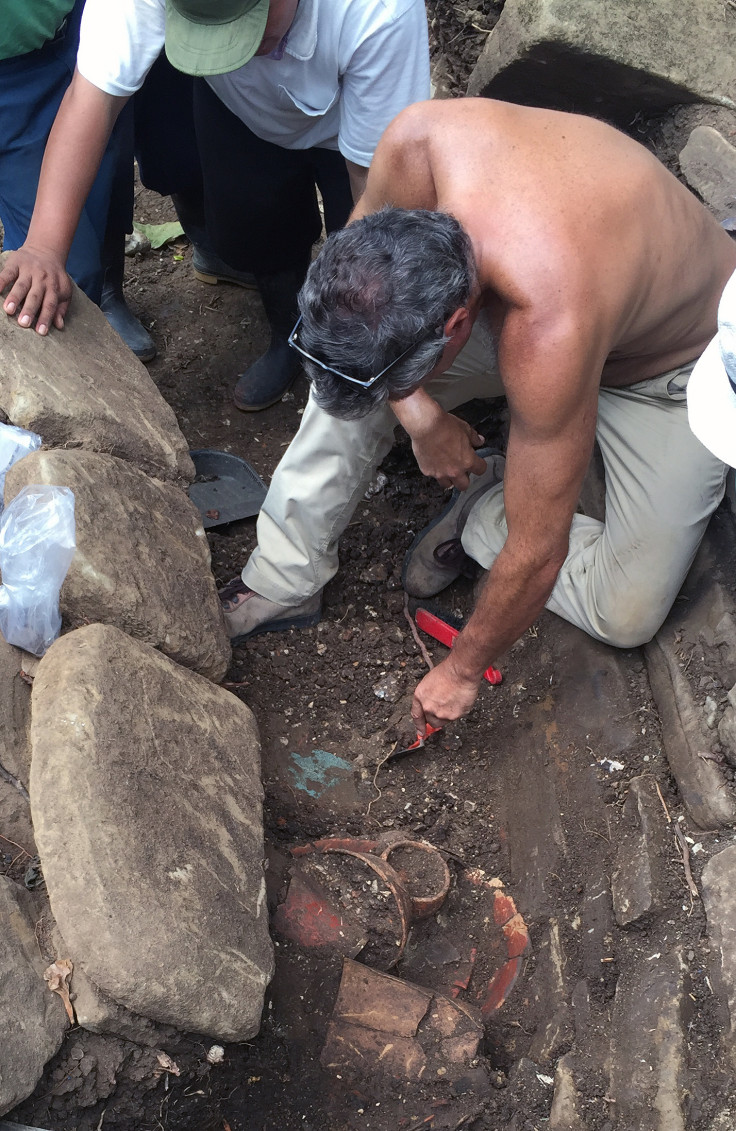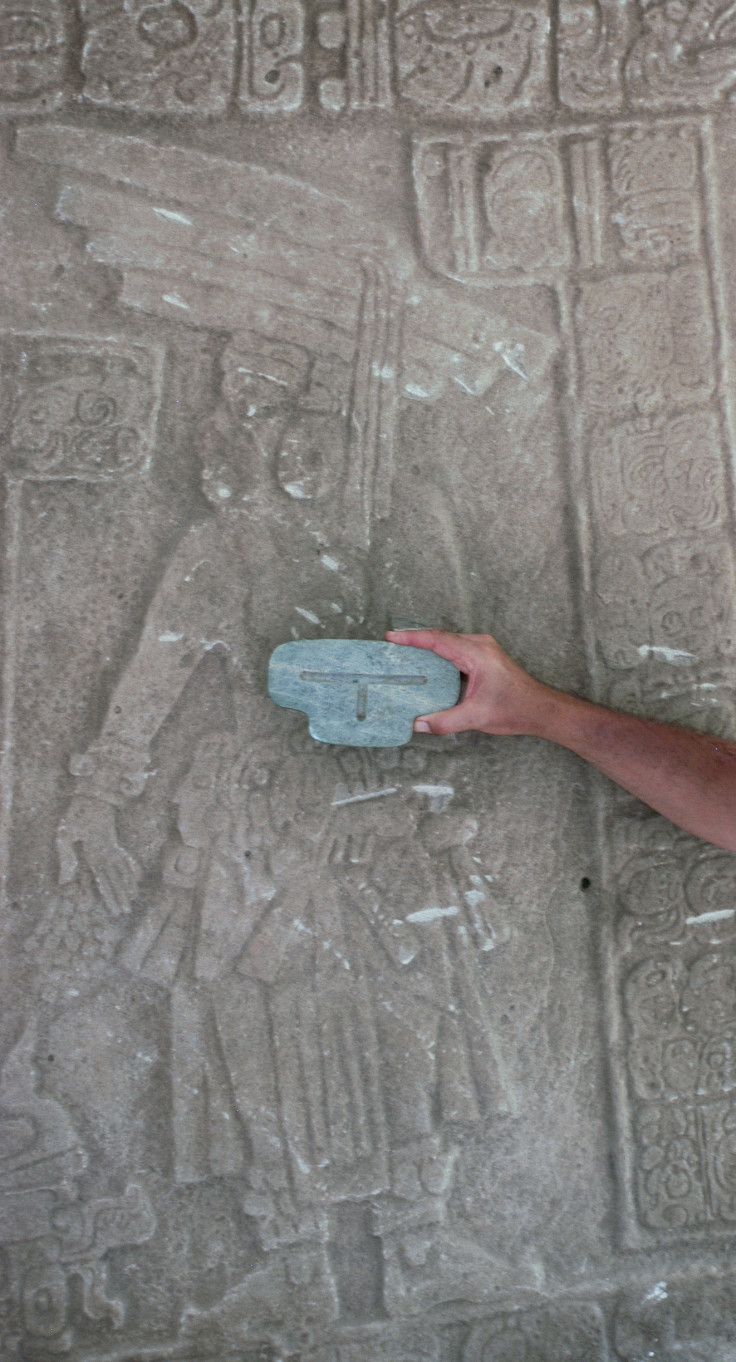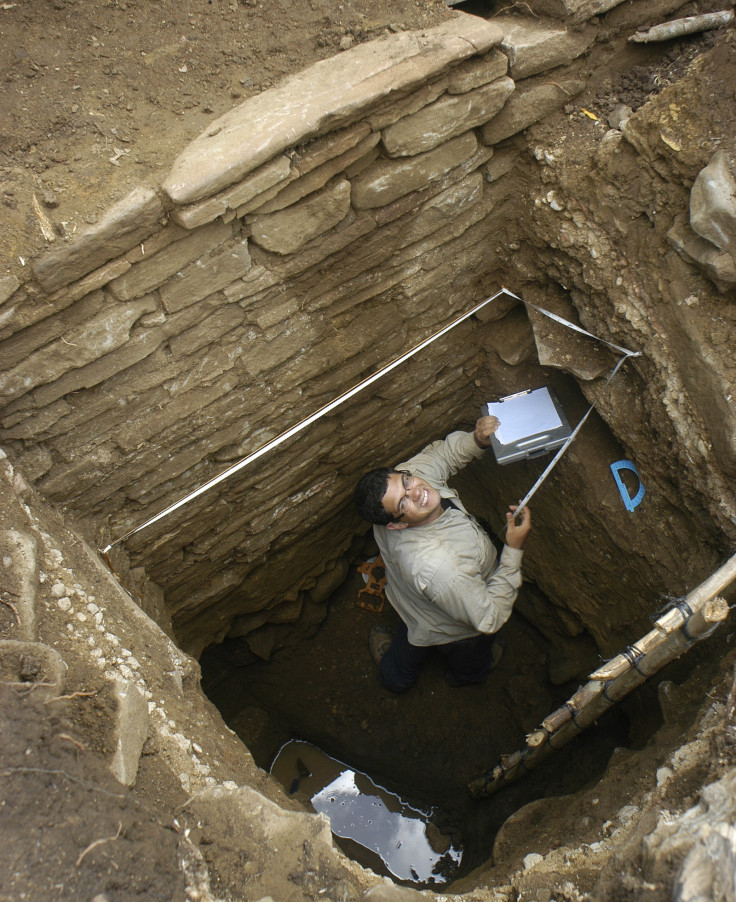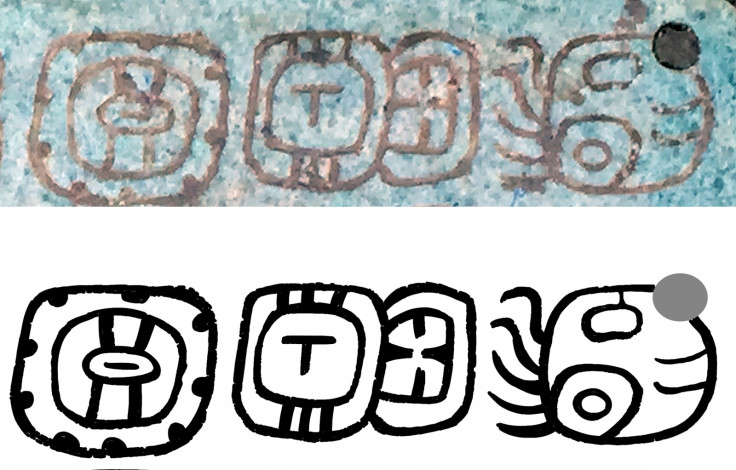Extraordinary Mayan royal tomb reveals king's incense scattering rituals
King of Nim li Punit would wear a large jade pectoral decoration while performing sacred ceremonies.
Excavations of the royal palace at Nim li Punit in Belize suggest a history of rituals centring on a jade pectoral decoration engraved with hieroglyphics.
The 8th Century CE settlement of Nim li Punit was a regional seat of power in the Classic period of Mayan history. Excavations of the Palace Plaza of Nim li Punit have unearthed two 'extraordinary' tombs in the royal complex, with discoveries including a Wind God Vase and a jade chest decoration that the king is thought to have worn during religious ceremonies.
The jade pectoral is engraved with hieroglyphs, and identifies the king of Nim li Punit with the god of music and the monsoon-bringing winds, argues archaeologist Geoffrey Braswell of the University of California, San Diego, who excavated the site.
"The extraordinary nature of Tomb 5 gives us a glimpse of regal rituals that were practiced for centuries and that were central to ancient Maya concepts of kingship and agriculture," Braswell writes in a paper published in the Journal of Field Archaeology.
The king, who had responsibility for the harvest and wellbeing of his people, is thought to have worn the ornament while scattering incense. It was carved with text for use in such a ritual in 672 CE, for a ruler called Janaab Ohl K'inich, thought to be the king of Nim li Punit. Stone columns at the settlement depict figures wearing the jade pectoral about 50 and 60 years after it was initially carved.
About 400 years later, these rituals were discontinued around the year and the jade pectoral was buried, the authors write, which coincides with a period of climatic change and instability in southern Belize.

"Divine rulers were responsible for rains and agricultural fertility not only in Formative cultures [before the Maya], but also among the Classic Maya," Braswell writes in the paper.
In another tomb, pottery made in a style developed in the ancient city of Teotihuacan was found, suggesting an intimate relationship with the central Mexican rulers. The local royalty at Nim li Punit may have had close links with the more powerful Mayan seats such as Copan, according to Braswell.

In addition to the palace, the archaeologists excavated a 'popol nah', or council house. The presences of such a building implies a devolved power structure where the ruling class did not have absolute control in Nim li Punit. This is in contrast to many larger Mayan settlements, the authors note.
The ancient settlement of Nim li Punit first came to light with the discovery of eight carved stelae, or stone columns, with hieroglyphics. It had already been known to local people, but was 'rediscovered' by prospecting oil companies in the 1970s.


© Copyright IBTimes 2025. All rights reserved.






















